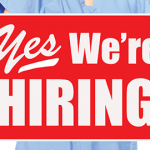These schools flourished because of the needs of a growing nation. In Europe, physicians were the product of universities that had a reputation for training doctors and would vouch for their graduates’ skills. At the time of this nation’s founding, anyone who seemed to have the relevant skill set was welcome to refer to themselves as doctor. Most American physicians at the time could not afford to travel to Europe for medical training and, instead, were apprenticed to a more senior physician to learn the craft.5 This homegrown system of training made Americans remarkably accepting of a wide range of medical philosophies among their physicians, even as medical training became formalized.
It should also be said that politics played a role in allowing these alternative schools to flourish. Andrew Jackson’s presidency had left behind a populist, anti-elitist sentiment that found Thomsonian medicine particularly appealing.6 The Jacksonians happily rejected expensive remedies in favor of common sense cures supported by alternative facts.
The other factor, of course, was greed. At some point, it became evident that money could be made in minting medical doctors, and diploma mills masquerading as medical schools sprung up across the country, like academic kudzu.7
The Flexnerian Revolution
In 1904, the American Medical Association (AMA) set out to reform American medical education. The AMA founded the Council on Medical Education (CME), which created the overall structure for a four-year medical education, comprising two years of anatomy and physiology, followed by two years of clinical work at a teaching hospital. The CME also set the minimum requirements for entry into medical school, thus introducing pre-med into the academic lexicon.8
Not surprisingly, these pronouncements made little impact. The public, in general, showed little interest in getting involved with telling schools how to train doctors. In the absence of a groundswell of moral outrage, little motivation existed for any medical school to come to heel.
Therefore, in 1908, the CME commissioned the Carnegie Foundation for the Advancement of Teaching to survey the current state of medical education in the U.S. The Carnegie Foundation, in turn, contracted the work to Abraham Flexner. Flexner was an interesting choice; he was an experienced educator, but had no training either in medicine or medical education.9
Flexner proceeded to visit each of the 155 medical schools that existed in North America at the time, each reflecting some mix of the extant medical philosophies. At the end of his travels, Flexner documented what he saw. The eponymous Flexner Report was scathing.



